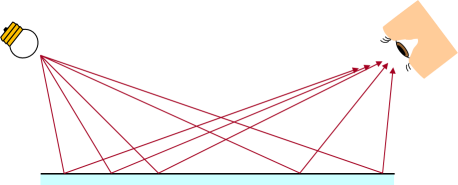Why is the incident angle and the reflection angle the same?
‘Law of reflection’ has the word ‘law’ attached. ‘Law’ refers to a situation in which a natural phenomenon happens repeatedly and without exceptions. In other words, ‘law’ only tells the reproducibility of natural phenomena (what happens repeatedly), but it does not tell the cause.
If so, why is the angle of incidence and reflection of the mirror the same?
What if there is reflection occurs at the end of the mirror?
Suppose that reflection occurs at the corner of the mirror. Then, the incident angle and the reflection angle are no longer the same.

Everyone knows that this does not actually happen. To prove this, we use the property of the wave.
First, let’s look at the property of the wave. The ongoing wave can only continue to proceed when it coherent with the surrounding wave. If they do not match each other, their phase may be offset and disappeared.

What happens when a reflection occurs at the same incident angle and reflection angle?
This time, let’s assume that light reflections occur at the point with the same angle of incidence and reflection angle of the mirror.

In this case, the phases of the incoming waves are matched. This light can proceed. As a result, the reflection of light occurs at the point with the same angles.